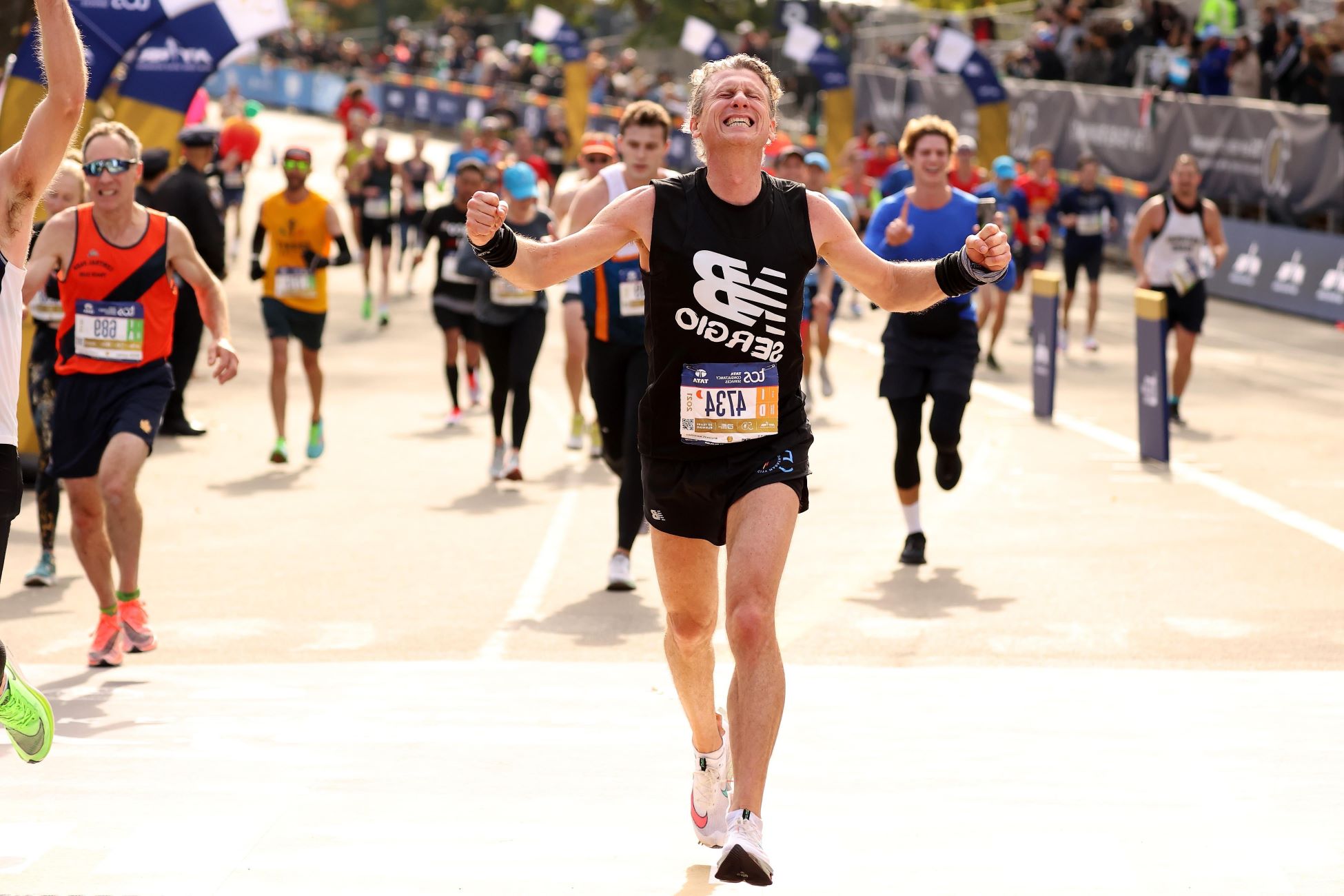Home>Health & Nutrition>Recovery>6 Strategies For Building Strength After An Injury Through Running


Recovery
6 Strategies For Building Strength After An Injury Through Running
Published: February 27, 2024
Discover 6 effective strategies for recovering strength after an injury through running. Enhance your recovery process and regain strength with these proven techniques.
(Many of the links in this article redirect to a specific reviewed product. Your purchase of these products through affiliate links helps to generate commission for Therunningadvisor.com, at no extra cost. Learn more)
Table of Contents
- Understanding the Impact of Injury on Running Performance
- Setting Realistic Goals for Recovery and Progress
- Incorporating Cross-Training and Strength Training into Your Routine
- Gradually Increasing Mileage and Intensity
- Listening to Your Body and Adjusting Your Training Plan Accordingly
- Seeking Professional Guidance and Support for Rehabilitation and Training
Understanding the Impact of Injury on Running Performance
Suffering an injury can be a significant setback for runners, impacting not only their physical well-being but also their mental resilience. The toll of an injury extends beyond the physical pain, affecting the overall running performance and disrupting the established training routine. Understanding the multifaceted impact of injury on running performance is crucial for devising an effective recovery plan and preventing future setbacks.
-
Physical Limitations: Injuries can lead to a decrease in muscle strength, flexibility, and endurance, hindering a runner's ability to maintain their previous performance levels. The pain and discomfort associated with the injury can further impede mobility and overall physical function, making it challenging to resume regular training.
-
Psychological Strain: Enduring an injury can take a toll on a runner's mental well-being. The frustration of being unable to engage in their beloved activity, coupled with the fear of re-injury, can lead to feelings of anxiety and apprehension. Additionally, the loss of progress and the uncertainty of recovery timelines can contribute to a sense of demotivation and emotional distress.
-
Disrupted Training Routine: Injuries disrupt the carefully crafted training regimen, leading to a decline in fitness levels and performance. The forced hiatus from running can result in a loss of cardiovascular endurance, muscular strength, and overall conditioning, necessitating a strategic approach to regain lost ground.
-
Altered Running Mechanics: Certain injuries can lead to changes in running mechanics and gait patterns, potentially causing imbalances and compensatory movements. These alterations can predispose runners to a higher risk of developing secondary injuries if not addressed effectively during the recovery phase.
-
Impact on Performance Goals: For many runners, injuries can derail their progress towards achieving personal bests or meeting specific race targets. The need to recalibrate performance goals and adjust expectations in light of the injury can be a challenging psychological hurdle to overcome.
Understanding the comprehensive impact of injury on running performance underscores the importance of a holistic approach to recovery. By acknowledging the physical, psychological, and training-related implications of an injury, runners can tailor their rehabilitation and training strategies to address these multifaceted challenges effectively.
Setting Realistic Goals for Recovery and Progress
Setting realistic goals is a pivotal aspect of the recovery journey for runners navigating the aftermath of an injury. It serves as a guiding beacon, steering individuals towards a balanced and sustainable approach to rehabilitation and progress. When formulating recovery goals, it is essential to consider the unique nature of the injury, individual fitness levels, and the overarching objective of returning to running with strength and resilience.
Embracing Patience and Progression
Recovery from an injury demands a patient and gradual approach. Setting realistic goals involves acknowledging the incremental nature of progress and recognizing that healing is not a linear process. Embracing patience allows runners to focus on small victories and incremental improvements, fostering a positive mindset and preventing frustration during the recovery phase.
Tailoring Goals to the Recovery Timeline
Each injury comes with its own timeline for rehabilitation and recovery. Setting realistic goals entails aligning expectations with the projected recovery timeline provided by healthcare professionals. By tailoring goals to the specific phases of recovery, runners can establish achievable milestones that mark their progress, ensuring that they do not rush the healing process or set unrealistic expectations.
Focusing on Functional Milestones
Incorporating functional milestones into the goal-setting process can provide a tangible framework for tracking recovery and progress. These milestones may include achieving pain-free mobility, regaining strength and flexibility, and gradually reintegrating running-specific movements. By focusing on functional markers of progress, runners can gauge their recovery in a practical context, fostering a sense of accomplishment and motivation.
Balancing Ambition with Prudence
While it is natural to aspire for a swift return to pre-injury performance levels, setting realistic goals necessitates a balance between ambition and prudence. It involves acknowledging the need for gradual progression and respecting the body's signals during the recovery journey. By striking this balance, runners can mitigate the risk of re-injury and cultivate a sustainable approach to rebuilding their running capabilities.
Cultivating Adaptability and Resilience
In the realm of injury recovery, unforeseen challenges and setbacks may arise, necessitating adaptability and resilience in goal setting. Realistic goals should accommodate the potential fluctuations in the recovery process, allowing for adjustments based on the body's response to rehabilitation efforts. Cultivating adaptability empowers runners to navigate the recovery journey with resilience, adjusting their goals as needed while staying committed to the overarching objective of returning to running in a healthy and sustainable manner.
Celebrating Progress and Acknowledging Achievements
Setting realistic goals involves celebrating the incremental progress made during the recovery journey. By acknowledging achievements, no matter how small, runners can maintain a positive outlook and stay motivated throughout the rehabilitation process. This celebratory approach to goal setting fosters a sense of accomplishment, reinforcing the notion that every step forward, no matter how modest, is a significant stride towards recovery and progress.
In essence, setting realistic goals for recovery and progress involves a nuanced blend of patience, adaptability, and prudence. By embracing a holistic approach to goal setting, runners can navigate the complexities of injury recovery with resilience, ensuring that their aspirations align with the realities of the healing process.
Incorporating Cross-Training and Strength Training into Your Routine
Integrating cross-training and strength training into a runner's routine is a strategic and multifaceted approach that yields numerous benefits during the recovery phase and beyond. Cross-training involves engaging in alternative forms of exercise, such as swimming, cycling, or elliptical workouts, to supplement running. On the other hand, strength training encompasses targeted exercises aimed at enhancing muscular strength, stability, and overall functional fitness. By incorporating these elements into a comprehensive training regimen, runners can optimize their recovery, mitigate the risk of future injuries, and elevate their overall performance.
Enhancing Muscular Balance and Stability
Cross-training and strength training play a pivotal role in fortifying muscular balance and stability, which are integral for injury prevention and rehabilitation. Engaging in activities like swimming or cycling not only provides a cardiovascular workout but also targets different muscle groups, promoting overall muscular balance and reducing the likelihood of overuse injuries associated with running. Additionally, strength training exercises, such as lunges, squats, and core workouts, bolster the stability of key muscle groups, enhancing resilience and reducing the risk of recurrent injuries.
Diversifying Physical Stress and Load Distribution
Incorporating cross-training diversifies the physical stress placed on the body, allowing runners to maintain cardiovascular fitness while reducing the repetitive impact on weight-bearing joints and muscles. This diversification of physical stress aids in mitigating the risk of overuse injuries, as it minimizes the strain on specific areas of the body that are typically subjected to high impact during running. Furthermore, strength training contributes to improved load distribution across muscles and joints, fostering a more balanced and resilient musculoskeletal system.
Facilitating Active Recovery and Rehabilitation
Cross-training serves as an avenue for active recovery, enabling runners to engage in low-impact exercises that promote circulation, mobility, and muscular recovery without exacerbating the existing injury. By incorporating activities like swimming or cycling, individuals can sustain their cardiovascular conditioning while allowing the injured area to recuperate. Moreover, targeted strength training exercises facilitate the rehabilitation process by strengthening weakened or underutilized muscle groups, expediting the restoration of functional strength and mobility.
Promoting Overall Fitness and Performance
The integration of cross-training and strength training contributes to an overall enhancement of fitness and performance. Cross-training activities not only complement running by maintaining cardiovascular endurance but also foster a well-rounded level of fitness by engaging different movement patterns and energy systems. Concurrently, strength training augments running performance by improving muscular power, endurance, and biomechanical efficiency, translating to enhanced running economy and reduced fatigue during runs.
Fostering Mental Resilience and Variety
Diversifying the training regimen through cross-training and strength training introduces variety and novelty into the routine, mitigating the mental monotony often associated with injury recovery. This infusion of variety fosters mental resilience, keeping runners motivated and engaged in their training despite the temporary limitations imposed by the injury. Furthermore, the sense of accomplishment derived from mastering new activities and progressing in strength training can bolster confidence and morale during the recovery journey.
In essence, the incorporation of cross-training and strength training into a runner's routine is a holistic and strategic approach that reaps multifaceted benefits. By embracing these complementary training modalities, runners can fortify their physical and mental resilience, expedite the recovery process, and cultivate a well-rounded foundation for sustained running performance.
Gradually Increasing Mileage and Intensity
Gradually increasing mileage and intensity is a fundamental tenet of injury recovery and long-term performance enhancement for runners. This strategic approach involves a systematic and progressive elevation of running distances and workout intensities, allowing the body to adapt, strengthen, and build resilience over time. By adhering to a structured and incremental trajectory, runners can optimize their physical conditioning, mitigate the risk of re-injury, and lay a robust foundation for sustained running success.
Progressive Adaptation and Physiological Resilience
The process of gradually increasing mileage and intensity aligns with the body's capacity for adaptation and resilience. By incrementally extending running distances and intensifying workouts, runners stimulate physiological adaptations within their cardiovascular, muscular, and skeletal systems. This gradual exposure to increased demands fosters the development of enhanced aerobic capacity, muscular endurance, and biomechanical efficiency, fortifying the body's ability to withstand the rigors of running without succumbing to overuse injuries or premature fatigue.
Mitigating the Risk of Overuse Injuries
A gradual approach to mileage and intensity progression serves as a proactive measure to mitigate the risk of overuse injuries, which often arise from abrupt spikes in training volume or intensity. By respecting the body's need for gradual adaptation, runners minimize the likelihood of overstressing tendons, ligaments, and muscles, thereby reducing the incidence of common overuse ailments such as tendinitis, stress fractures, and muscle strains. This prudent approach prioritizes long-term sustainability and injury prevention, safeguarding the runner's overall well-being.
Building Aerobic Base and Endurance
Incrementally increasing mileage lays the groundwork for building a robust aerobic base and endurance capacity. By gradually extending running distances, runners stimulate the development of cardiovascular adaptations, such as increased capillarization, improved oxygen utilization, and enhanced cardiac efficiency. This progressive aerobic development not only augments the body's capacity to sustain prolonged efforts but also bolsters recovery mechanisms, enabling runners to recuperate more efficiently between workouts and long runs.
Balancing Intensity for Optimal Progression
In tandem with mileage increments, the strategic manipulation of workout intensity plays a pivotal role in optimizing progression. Gradually integrating higher-intensity intervals, tempo runs, and hill workouts into the training regimen cultivates a balanced approach to performance enhancement. This deliberate elevation of intensity fosters improvements in lactate threshold, running economy, and neuromuscular coordination, contributing to enhanced race pace capabilities and overall performance gains.
Adhering to Recovery and Adaptation Cycles
The gradual increase in mileage and intensity aligns with the principles of recovery and adaptation cycles, allowing the body to assimilate the training stimulus effectively. By respecting the need for adequate recovery between escalated training sessions, runners facilitate the consolidation of physiological adaptations, minimizing the risk of overtraining and staleness. This cyclical approach to progression optimizes the balance between stress and recovery, ensuring that each incremental phase of training yields sustainable performance improvements.
Nurturing Mental Resilience and Confidence
The process of gradually increasing mileage and intensity extends beyond physical conditioning, nurturing mental resilience and confidence. Each successful progression milestone, whether in distance or intensity, reinforces the runner's belief in their capabilities and fortitude. This iterative process of pushing boundaries in a controlled manner cultivates a sense of accomplishment, bolstering the runner's mental fortitude and conviction in their ability to tackle new challenges, both in training and racing.
In essence, the practice of gradually increasing mileage and intensity embodies a strategic and holistic approach to injury recovery and performance enhancement. By embracing this methodical progression, runners can fortify their physiological capacities, mitigate injury risks, and foster a resilient mindset, laying the groundwork for sustained running success and fulfillment.
Read more: 6 Easy Strength Exercises For Older Runners
Listening to Your Body and Adjusting Your Training Plan Accordingly
Listening to your body is a fundamental principle that underpins the art of running, especially during the delicate phase of injury recovery. It involves attuning oneself to the subtle cues and signals emanating from the body, encompassing sensations of discomfort, fatigue, and resilience. This heightened awareness serves as a compass, guiding runners to make informed decisions and adjustments to their training plan in response to the ever-evolving feedback from their physiology.
The process of listening to your body begins with cultivating a deep sense of bodily awareness. It entails tuning into the nuanced messages conveyed by muscles, tendons, and joints during each run and workout. By honing this awareness, runners can discern between the normal sensations of exertion and the warning signs of potential overexertion or impending injury. This acute sensitivity forms the bedrock of a proactive and preventive approach to injury management, allowing runners to intervene at the earliest indications of strain or imbalance.
Moreover, listening to your body necessitates a willingness to embrace flexibility and adaptability in training. It involves relinquishing rigid adherence to predetermined training schedules and instead, embracing a dynamic and responsive approach. When the body communicates signs of fatigue, soreness, or vulnerability, it is imperative to heed these signals and modify the training plan accordingly. This may entail adjusting the intensity, duration, or type of workouts to accommodate the body's needs, fostering a harmonious balance between training stimulus and recovery.
The art of listening to your body extends beyond the realm of physical sensations, encompassing the psychological and emotional dimensions of running. It involves acknowledging the fluctuations in motivation, mental resilience, and overall well-being, recognizing that these factors profoundly influence the body's receptivity to training stimuli. By attuning to the ebb and flow of mental fortitude and enthusiasm, runners can tailor their training plan to align with their psychological state, ensuring that the pursuit of recovery and progress remains sustainable and fulfilling.
Furthermore, listening to your body engenders a spirit of self-compassion and self-care within the realm of running. It involves honoring the body's need for rest, rejuvenation, and recuperation, recognizing that these periods of respite are integral components of the overall training journey. By embracing rest as a strategic tool for recovery, runners can optimize the body's adaptive response to training, fostering resilience and fortitude in the face of physical and mental demands.
In essence, listening to your body and adjusting your training plan accordingly embodies a holistic and intuitive approach to injury recovery and long-term running success. By cultivating a deep awareness of physiological and psychological signals, runners can navigate the complexities of training with wisdom and prudence, ensuring that their pursuit of running excellence remains grounded in harmony with the body's inherent wisdom and resilience.
Seeking Professional Guidance and Support for Rehabilitation and Training
Seeking professional guidance and support for rehabilitation and training is a pivotal step in the journey of injury recovery and long-term running success. The expertise and insights offered by healthcare professionals, coaches, and specialized trainers play a transformative role in optimizing the recovery process, mitigating injury risks, and fostering sustainable performance gains.
Healthcare professionals, including sports medicine physicians, physical therapists, and orthopedic specialists, possess the specialized knowledge and diagnostic acumen necessary for devising comprehensive rehabilitation plans tailored to the specific nature of the injury. Their expertise extends beyond mere symptom management, encompassing the identification of underlying biomechanical imbalances, gait irregularities, and muscular weaknesses that may predispose runners to recurrent injuries. By collaborating with healthcare professionals, runners can gain valuable insights into injury prevention strategies, targeted rehabilitation exercises, and progressive return-to-running protocols, ensuring a safe and effective transition back to full training capacity.
In parallel, the guidance of experienced running coaches and trainers is instrumental in structuring a balanced and goal-oriented training regimen. These professionals offer personalized training plans that align with the runner's recovery timeline, fitness level, and performance aspirations. By leveraging their expertise in periodization, workload management, and performance optimization, runners can navigate the delicate balance between pushing physical boundaries and respecting the body's need for recovery. Moreover, coaches provide invaluable mentorship, motivation, and accountability, nurturing a supportive environment that fosters resilience and commitment throughout the recovery journey.
Furthermore, seeking professional guidance facilitates the implementation of targeted strength and conditioning programs designed to address muscular imbalances, enhance functional strength, and fortify injury-prone areas. Strength and conditioning specialists employ evidence-based methodologies to tailor exercises that bolster the runner's resilience, improve running mechanics, and mitigate the risk of future injuries. This proactive approach to injury prevention and performance enhancement empowers runners to cultivate a robust foundation of physical preparedness, laying the groundwork for sustained running success and longevity.
In essence, seeking professional guidance and support for rehabilitation and training is a strategic investment in the runner's holistic well-being and long-term performance. By harnessing the collective expertise of healthcare professionals, coaches, and specialized trainers, runners can navigate the complexities of injury recovery with informed guidance, proactive injury prevention strategies, and a structured approach to performance optimization. This collaborative synergy between the runner and the professional support network fosters a resilient and empowered approach to running, ensuring that the pursuit of excellence remains grounded in wisdom, expertise, and holistic well-being.











